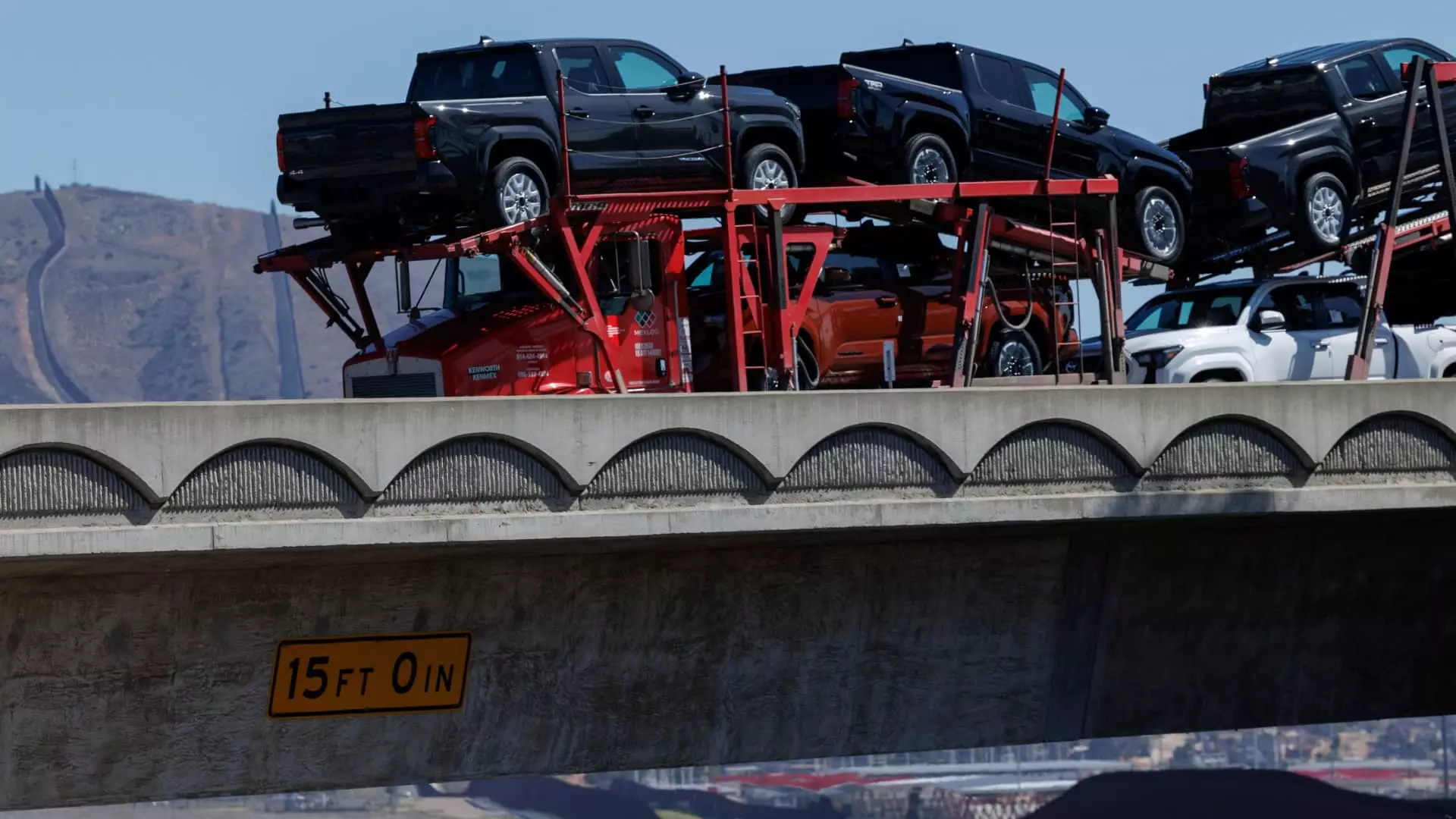5 Essential Insights on Trump’s 25% Auto Tariffs: A Risky Gamble for American Workers

When President Donald Trump proclaimed a sweeping 25% tariff on imported automobiles and certain auto parts, a palpable wave of uncertainty swept through the auto industry. This announcement, although intended to bolster American manufacturing, appears to embody a classic case of economic isolationism. It’s disconcerting to note how tariffs, while superficially beneficial to domestic workers, often translate into higher prices for consumers and can lead to unintended consequences that may hurt more than help. According to analysts from Goldman Sachs, such tariffs could inflate the cost of imported cars dramatically—between $5,000 and $15,000—an alarming price increase that ultimately burdens the same American consumers the President claims to protect.
The Perils of High Tariffs: Are We Addressing the Wrong Problems?
To view these tariffs as a panacea for dwindling auto manufacturing jobs is overly simplistic. While the United Auto Workers (UAW) union celebrates the announcement as a significant win for blue-collar labor, one must interrogate the long-term viability of this strategy. Favoring tariffs as the primary tool for economic renewal raises legitimate concerns about global supply chains, particularly given that vehicles consist of an intricate tapestry of parts imported from upwards of 120 different countries. The argument that elevating tariffs will boost American jobs feels somewhat paradoxical when considering that many automakers heavily rely on foreign components. As noted, approximately 65% of passenger vehicles produced in North America are still assembled in the U.S.—with a significant portion of their parts sourced externally.
Market Reactions: A Diverging Landscape
The stock market response to Trump’s tariff announcement paints a conflicting picture. Shares of legacy automakers like General Motors fell sharply, with an 8% drop, while companies like Tesla experienced growth, showcasing a compelling contrast in market confidence. Analysts have pointed out that Tesla and Ford are positioned more favorably due to their manufacturing locations. However, GM’s vulnerability to these tariffs, given its substantial ties to Mexico, raises eyebrows—shouldn’t American companies strategize more effectively against the impact of such policies? The structural weaknesses of traditional auto giants, when juxtaposed with the agile dynamics seen in newer companies, suggests that an all-encompassing tariff approach might serve to further entrench existing disparities rather than rectify them.
Hollow Promises: A Severe Miscalculation?
Though the UAW heralds this decision as a breakthrough moment, the risk of hollow promises looms large. The rhetoric surrounding these tariffs leans heavily on the notion of ‘American Jobs,’ yet the reality of implementation remains murky. How will these tariffs be enforced? What is the timeline for their application? And, critically, what recourse do manufacturers have should these tariffs backfire? Trump’s executive order, which indicates a ripple effect with multiple phases, introduces layers of complexity that may exacerbate rather than alleviate labor market challenges.
A Dismal Trade-Off: Economic Protectionism or Self-Inflicted Wounds?
The trade-offs associated with economic protectionism are significant and merit thorough scrutiny. By focusing on tariffs as a form of nationalistic warfare, there is a risk that America could become compartmentalized economically, stifling innovation and adaptation in a global marketplace that does not wait for any one nation to catch up. Rising prices for consumers—a looming reality considering the tariff’s potential impact—could further alienate the very working-class individuals President Trump claims to uplift.
The imposition of a 25% tariff on imported vehicles and auto parts under the guise of protecting American jobs hints at a broader issue of misguided policy. As history demonstrates, tariffs can be a double-edged sword, where short-term gains are eclipsed by long-term costs. Even if the objective is to strengthen industries, the approach must be multifaceted, focused on innovation, competitiveness, and fostering a resilient workforce, rather than relying solely on heavy-handed tariff measures.





